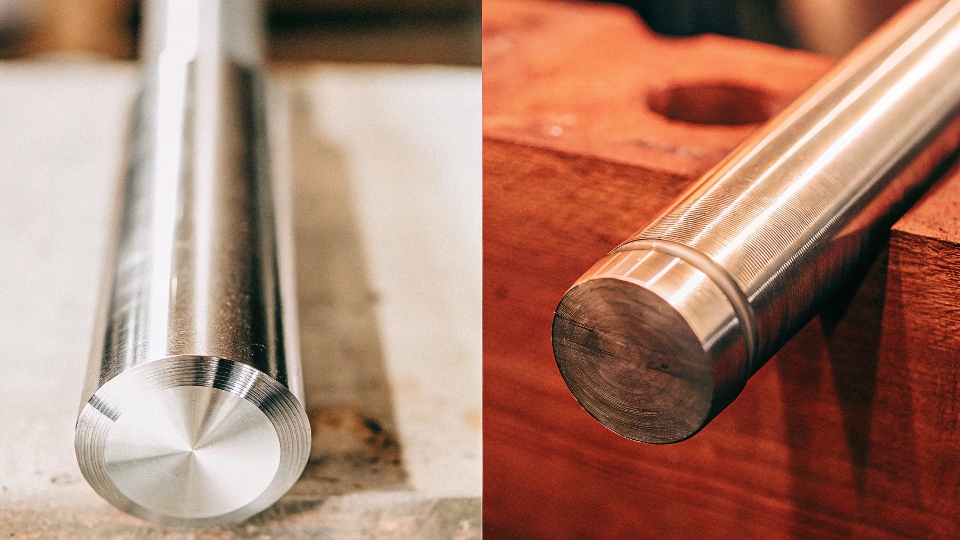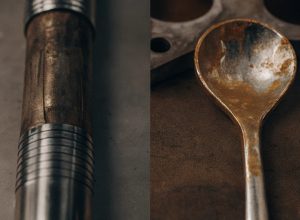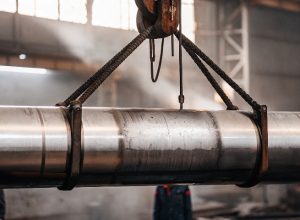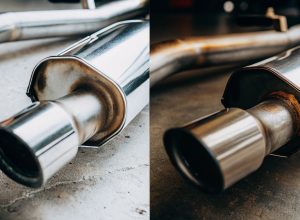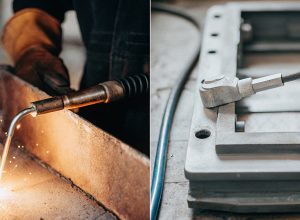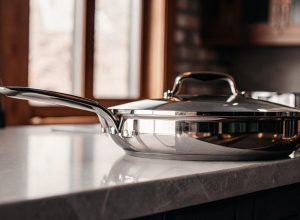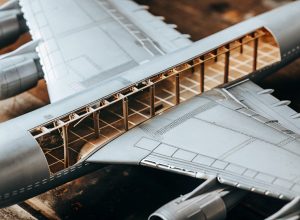Struggling to choose between pure titanium and titanium alloy? Making the wrong choice can compromise your project’s performance, leading to costly redesigns and delays.
Yes, certain titanium alloys are engineered to be more flexible and formable than pure titanium. Alloying elements are added specifically to improve mechanical properties, creating materials with a better balance of strength and elasticity for high-stress applications in aerospace, medical, and automotive industries.
While the simple answer is yes, the real value for technical experts like Sophie lies in understanding por qué this is the case. This knowledge is key to selecting the perfect grade for demanding applications, from commercial airframes to medical implants that must last a lifetime. This is a common topic I discuss with clients at trade shows, as the distinction is critical. Let’s break down the details that matter most to engineers and purchasing managers.
¿Cuál es la diferencia entre el titanio puro y la aleación de titanio?
Choosing between pure titanium and an alloy can feel complicated. The wrong choice directly impacts performance, cost, and the ultimate success of your project. Knowing their fundamental differences simplifies the decision.
Pure titanium is an unalloyed element prized for its excellent corrosion resistance and biocompatibility. In contrast, titanium alloys are mixtures of titanium with elements like aluminum or vanadium. These additions enhance specific mechanical properties like strength, hardness, and fatigue resistance, making them significantly stronger than pure titanium.
I often explain this to purchasing managers who are weighing cost against performance. Pure titanium, which we supply in grades like CP Grade 1 and 2, is perfect for applications where corrosion is the main enemy, such as in chemical processing tanks or certain medical implants. Its lower strength is not a problem in those environments. However, for a client like Sophie, whose customers build aerospace components, pure titanium simply isn’t strong enough. They need titanium alloys like the workhorse Ti-6Al-4V. The added elements create a material that can withstand incredible forces without failing.
Key Distinctions at a Glance
| Característica | Pure Titanium (CP Grades) | Aleación de titanio (por ejemplo, Ti-6Al-4V) |
|---|---|---|
| Composición | Over 99% titanium | Titanium mixed with other elements |
| Beneficio principal | Superior corrosion resistance | Elevada relación resistencia/peso |
| Uso típico | Chemical plants, medical implants | Aerospace structures, engine parts |
| Fuerza | Baja | Significantly higher |
¿Son flexibles las aleaciones de titanio?
Do you need a material that is both incredibly strong and flexible? Using a material that is too rigid in a dynamic environment can lead to stress fractures and component failure. Titanium alloys offer an excellent balance.
Yes, many titanium alloys are designed for very good flexibility and formability. They have a lower modulus of elasticity1 compared to steel. This allows them to bend further without permanent damage and return to their original shape, making them ideal for parts that require elasticity and fatigue resistance2.
I remember a client working on a spring-like component for a medical device. They needed the material to bend repeatedly for years without breaking or weakening. Pure titanium couldn’t provide the necessary springback3, so we recommended a specific beta titanium alloy. This property is also what makes alloys like Ti-6Al-4V a top choice for Sophie’s aerospace clients. Aircraft landing gear and wing structures must flex under load during takeoff and landing. The material’s ability to absorb this energy without deforming is called elasticity, and it is a key safety feature. Our manufacturing process ensures this property remains consistent from batch to batch, which is critical for such applications.
Understanding Elasticity in Titanium
- Lower Modulus: It can bend more than steel under the same force without being permanently bent.
- Springback: It has a natural tendency to return to its original form after being stressed.
- Resistencia a la fatiga: It can endure millions of cycles of bending and stress without failing.
¿Por qué la aleación de titanio es más fuerte que el titanio?
Do you wonder how adding just a small amount of another element makes titanium so much stronger? Not understanding the science can make it hard to justify the higher cost of an alloy. The secret is inside the material’s structure.
Titanium alloys are stronger because elements like aluminum and vanadium create a more complex internal crystal structure. These added atoms get in the way of atomic movement, a process known as dislocation. This makes it much harder to deform the material, which we experience as increased strength.
Think of it like trying to slide neat rows of bricks over each other. It’s fairly easy. Now, imagine you place some odd-shaped bricks randomly in those rows. The rows can’t slide anymore. The alloying elements are those odd-shaped bricks inside the metal’s crystal lattice. At my company, our metallurgical team spends years perfecting how we add these elements and how we heat-treat the material. This creates a fine-tuned mix of different crystal phases, like the alpha and beta phases in Ti-6Al-4V. This controlled microstructure is the source of the alloy’s incredible strength. For Sophie’s customers building a jet engine part, this engineered strength is what prevents a catastrophic failure at 30,000 feet.
How Alloying Creates Strength
- Dislocation Pinning: The alloying elements act like tiny pins, locking the atomic layers in place and resisting force.
- Microstructure Refinement: Controlled heating and cooling create a strong, fine-grained mix of crystal structures that resist deformation.
What are the disadvantages of titanium alloy?
Are you considering a titanium alloy for your next project? Overlooking its drawbacks can lead to unexpected manufacturing challenges and budget overruns. Knowing the downsides helps you plan effectively.
The main disadvantages of titanium alloys are their higher cost compared to materials like steel and their difficulty in machining and welding. Their hardness wears down cutting tools quickly, and their chemical reactivity at high temperatures requires special welding techniques to prevent contamination.
I’ve had many conversations with production managers who are cautious about working with titanium alloys for the first time. The challenges are real. Machining is difficult because the material doesn’t conduct heat well. All the heat builds up right at the cutting tool’s tip, causing it to wear out fast. Welding is also tricky because hot titanium loves to react with oxygen in the air, which can make the weld brittle and weak. This is where partnering with a trusted supplier is key. We not only provide high-quality material but also share data on how to best machine and weld it. This helps our clients like Sophie assure their customers that these challenges are manageable.
Common Challenges and Solutions
| Disadvantage | Why It Happens | How to Manage It |
|---|---|---|
| Higher Cost | Complex extraction and processing | Focus on long-term value from weight savings and long life |
| Machining Difficulty | Hardness and low thermal conductivity | Use very sharp tools, proper coolants, and slow cutting speeds |
| Welding Challenges | High reactivity with air at high temperatures | Weld in an inert atmosphere using TIG or laser welding techniques |
Conclusión
In short, titanium alloys are engineered for superior strength and flexibility over pure titanium. Understanding these key differences helps you select the right grade for your high-performance applications.
-
Understanding elasticity helps in selecting materials that can withstand dynamic loads without failure. ↩
-
Learn about fatigue resistance and its importance in ensuring the longevity of components under repeated stress. ↩
-
Understand the concept of springback and its importance in designing flexible components. ↩


